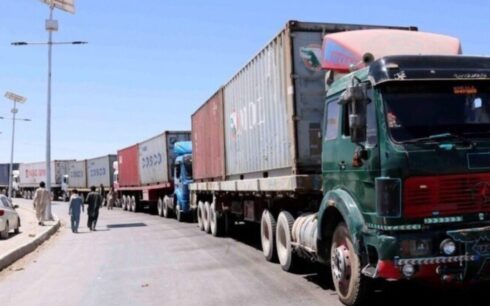KABUL, Afghanistan — A quarter of Afghanistan’s population, or approximately 11.6 million people, are facing acute food insecurity, according to a new report by two senior World Bank officials.
Faris Hadad-Zervos, the World Bank’s country director for Afghanistan, and Dina Umali-Deininger, the South Asia regional director for sustainable development, co-authored the report titled “Building Resilience to Address Afghanistan’s Food Security Crisis.” The report attributes the crisis to a combination of climate shocks, economic instability, and ongoing conflict.
The report highlights how climate shocks are compounding Afghanistan’s food insecurity. “The ongoing drought—among the worst in decades—has drastically reduced rainfall, severely impacting rain-dependent agriculture,” the authors wrote. Catastrophic flooding earlier this year in provinces such as Baghlan, Takhar, and Badakhshan destroyed homes, agricultural lands, and livestock, further straining the country’s fragile food systems.
Afghanistan ranks as the fourth most climate-vulnerable nation globally and seventh in terms of least capacity to cope with climate-related crises. According to the report, the frequency of droughts has increased dramatically, from an average of once every three years (1986–2012) to once every two years (2013–2023).
“These intensifying droughts and floods damage crops, disrupt supply chains, and increase food prices,” the report stated. “Climatic shocks—coupled with economic instability—worsen food insecurity, leaving vulnerable households at greater risk.”
The report also examined the impact of climate and economic shocks on Afghanistan’s agricultural economy. Droughts have exacerbated water shortages, reducing crop yields, while floods have caused immediate damage to crops and infrastructure.
Economic factors such as inflation, rising fuel costs, and currency depreciation have further strained household purchasing power, pushing vulnerable families deeper into crisis. “These combined challenges are leaving millions without reliable access to food,” the report noted.
The World Bank officials stressed that addressing Afghanistan’s food crisis requires more than emergency aid, urging investments in long-term resilience. Strategies outlined in the report include adopting drought-resistant crops, diversifying agricultural production, improving irrigation systems, and implementing integrated watershed management.
“Afghanistan must move beyond emergency aid to invest in sustainable solutions,” the report emphasized. Enhancing agricultural value chains, promoting sustainable farming practices, and developing early warning systems for climate events are critical to building resilience, it added.
Ongoing efforts and progress
The World Bank said it is tackling food insecurity in Afghanistan through initiatives like the Afghanistan Emergency Food Security Project (EFSP). The project, conducted in partnership with the U.N. Food and Agriculture Organization (FAO), supports smallholder farmers by boosting food crop production and addressing the nutritional needs of women-led households.
To date, the EFSP has benefited more than five million people, employed over 170,000 women farmers, increased wheat production by 26 percent, and provided improved irrigation and drainage services for 523,000 hectares of land.
The World Bank is also scaling up efforts to promote resilience in Afghanistan’s agricultural sector. This includes investing in climate-resilient seed value chains, advancing water management technologies, and establishing value addition facilities to connect food supply chains to markets.
“Building a sustainable agricultural system will not only improve food security but also contribute to Afghanistan’s economic recovery and stability,” the report concluded.





